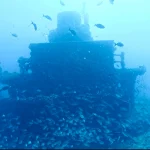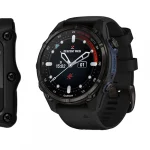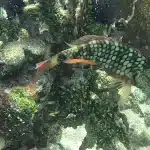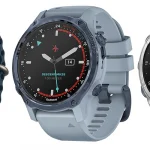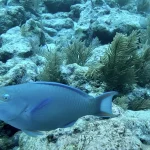Table of Contents
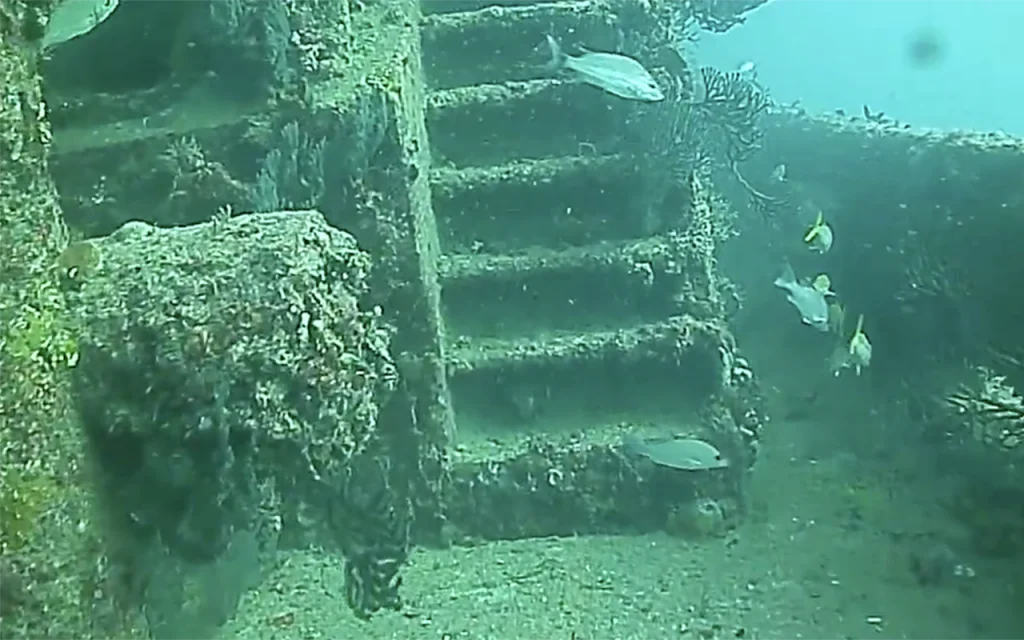
The presence of this diverse marine life makes the Jay Scutti an excellent site for both recreational diving and underwater photography, as divers can observe and capture the vibrant ecosystem that has developed around the wreck since it was sunk in 1986 as an artificial reef.
Article at a Glance
- Historical Significance: Originally launched in 1961 as the tugboat Arikok, it was seized in 1984 for drug smuggling and renamed Jay Scutti before being sunk as an artificial reef in 1986.
- Diving Depth: The wreck lies at a depth of 55 to 70 feet(approximately 17 to 21 meters), making it accessible for open water divers and suitable for various skill levels.
- Unique Features: Divers can explore the well-preserved wheelhouse, massive propeller, and the wreck’s upright structure, which offers interesting swim-throughs and vantage points.
- Rich Marine Life: The Jay Scutti is encrusted with corals, sponges, and other marine organisms, attracting a variety of fish species, including parrotfish and nurse sharks, creating a vibrant underwater ecosystem.
- Safety Measures: Divers are encouraged to follow safety protocols, including dive planning, performing safety stops, monitoring air supply, and using the buddy system to enhance safety during dives.
- Part of the Wreck Trek: The Jay Scutti is part of the Fort Lauderdale Wreck Trek, allowing divers to explore multiple wrecks in one trip, enhancing the overall diving experience.
- Dive Shops Offering Trips: Recommended dive shops for trips to the Jay Scutti include American Dream Dive Charters and Sea Experience, both known for their safety and guided dive services.
Wreck Location Coordinates and Depth
Depth
The wreck sits at a depth of approximately 55 to 70 feet (about 17 to 21 meters) below the surface, making it accessible for divers of all levels.
Location Coordinates
- Latitude: 26° 09.520′ N
- Longitude: 80° 04.760′ W
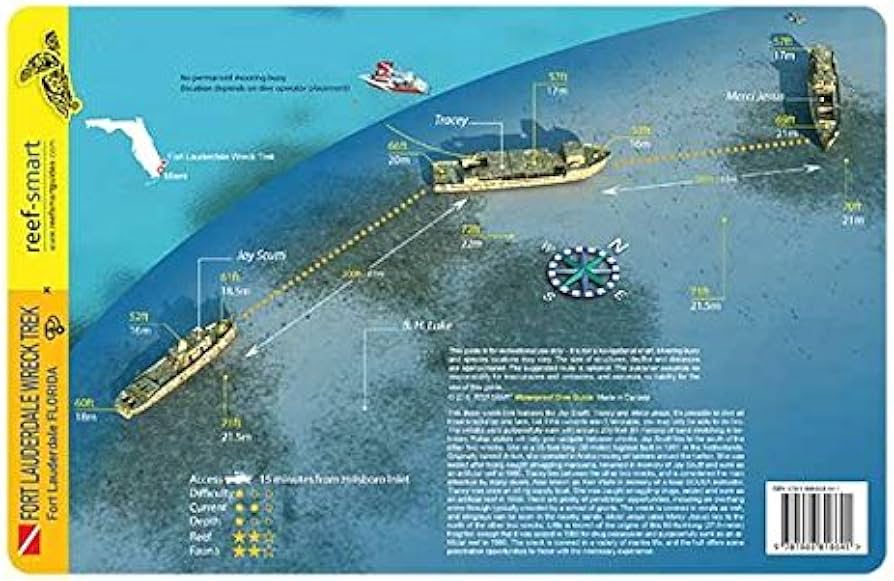
What Do Scuba Divers Say About This Wreck
- Diving Experience: Many divers appreciate the Jay Scutti for its accessibility, as it is suitable for divers of all levels. The wreck is located at a depth of approximately 55 to 70 feet, allowing open water divers to explore its features comfortably.
- Wreck Condition: The Jay Scutti is noted for being well-preserved and covered with vibrant marine life, including corals, sponges, and other invertebrates. This biodiversity enhances the diving experience, providing opportunities for underwater photography and exploration.
- Wreck Orientation: Divers report that the wreck sits upright with its bow pointing north, making it easier to navigate during dives. The wheelhouse rises to about 50 feet, providing interesting swim-throughs and vantage points for divers.
- Part of Wreck Trek: The Jay Scutti is part of the Fort Lauderdale Wreck Trek, which includes other nearby wrecks like the Tracey and Merci Jesus. Divers often enjoy multi-wreck dives, taking advantage of the proximity of these sites.
- Diving Operations: Several dive shops offer trips to the Jay Scutti, with divers recommending specific operators for their organization and safety consciousness. This adds to the overall positive experience for those new to diving or exploring wrecks.
What Kind of Marine Life Can Be Found on The Wreck
Corals: The wreck is extensively covered with various types of corals, which provide habitat and food for numerous marine species.
Sponges: Sponges thrive on the wreck, contributing to the biodiversity and serving as a food source for certain fish.
Hydroids and Tunicates: These invertebrates are also found on the wreck, adding to the rich ecosystem that develops around sunken structures.
Fish Species: The Jay Scutti attracts herbivorous fish, particularly parrotfish, which feed on the algae and invertebrates growing on the wreck. Other fish species commonly seen include snapper and grouper, which are drawn to the shelter provided by the wreck.
Invertebrates: A variety of other invertebrates inhabit the wreck, contributing to the overall ecological balance.
Key Information
| Key Information | Details |
|---|---|
| Wreck Name | Jay Scutti |
| Location | Fort Lauderdale, Florida |
| Depth | Approximately 55 to 70 feet (17 to 21 meters) |
| Type of Vessel | Tugboat |
| Original Name | Arikok |
| Year Built | 1961 |
| Year Sunk | 1986 |
| Historical Significance | Confiscated for drug smuggling; renamed in memory of a local businessman’s son |
| Marine Life | Corals, sponges, parrotfish, nurse sharks, and various marine organisms |
| Accessibility | Suitable for open water divers and higher skill levels |
| Part of Wreck Trek | Yes, part of the Fort Lauderdale Wreck Trek, which includes other nearby wrecks |
| Recommended Dive Shops | American Dream Dive Charters, Sea Experience |
| Safety Measures | Dive planning, safety stops, air monitoring, buddy system, and guided dives |
What Makes The Jay Scutti a Unique Diving Experience
- Historical Background: Originally built in 1961 as the Arikok, the tugboat has a fascinating history, having been confiscated after a marijuana smuggling attempt. It was later renamed Jay Scutti in memory of a local businessman’s son and sunk as an artificial reef in 1986, adding an intriguing narrative to the dive.
- Diverse Marine Life: The wreck is encrusted with a variety of marine organisms, including corals, sponges, hydroids, and tunicates. This rich biodiversity attracts numerous herbivorous fish, such as parrotfish, and provides a vibrant underwater ecosystem that divers can explore.
- Accessibility: The Jay Scutti is located at a depth of 55 to 70 feet, making it accessible to open water divers and suitable for various skill levels. Its upright position with the bow pointing north allows for easy navigation and exploration of the wreck.
- Part of the Wreck Trek: It is situated within the Fort Lauderdale Wreck Trek, a line of four wrecks that includes the Pride, Tracey, and Merci Jesus. This proximity allows divers to experience multiple wrecks in one dive trip, enhancing the overall diving adventure.
- Unique Features: The wreck features a prominent wheelhouse that rises to about 50 feet, creating opportunities for interesting swim-throughs. Divers can also explore the massive propeller and the stern area, where nurse sharks are often found resting.
- Scenic Dive Site: The combination of the wreck’s structure and the surrounding marine life creates a visually stunning environment, perfect for underwater photography and exploration.
How Does The Jay Scutti Compare to Other Shipwrecks in Florida
- Accessibility: The Jay Scutti is located at a depth of approximately 55 to 70 feet, making it accessible to divers of all skill levels. This is similar to other wrecks in the area, such as the Pride and Merci Jesus, which are also within a comparable depth range, allowing for a diverse group of divers to explore these sites comfortably .
- Diversity of Marine Life: Like other wrecks in the Fort Lauderdale area, the Jay Scutti is encrusted with various marine organisms, including corals, sponges, and invertebrates. This biodiversity attracts herbivorous fish, enhancing the underwater experience. However, the Jay Scutti is noted for its specific coverage of corals and sponges, which may differ from other wrecks that have varying ecological conditions .
- Historical Significance: The Jay Scutti has a unique backstory, having been originally named Arikok and confiscated for drug smuggling before being sunk as an artificial reef in memory of a local businessman’s son. This narrative adds a layer of intrigue compared to other wrecks, which may not have such a compelling history .
- Wreck Structure and Features: The Jay Scutti is a 95-foot tugboat that sits upright, with its wheelhouse rising to about 50 feet. This structure allows for interesting swim-throughs and exploration opportunities. In comparison, wrecks like the Peter B. McAllister and Donald McAllister are also tugboats but may offer different structural features and dive experiences .
- Part of a Wreck Trek: The Jay Scutti is part of the Fort Lauderdale Wreck Trek, which includes several other wrecks in close proximity, such as the Tracey and Merci Jesus. This clustering allows divers to explore multiple sites in a single dive trip, making it a unique feature compared to isolated wrecks elsewhere in Florida .
- Limited Penetration Opportunities: While the Jay Scutti offers a rich diving experience, it has fewer options for penetration dives compared to some other wrecks in Florida, which may have more accessible interiors for advanced divers. This aspect may appeal to recreational divers looking for a straightforward exploration without complex navigation .
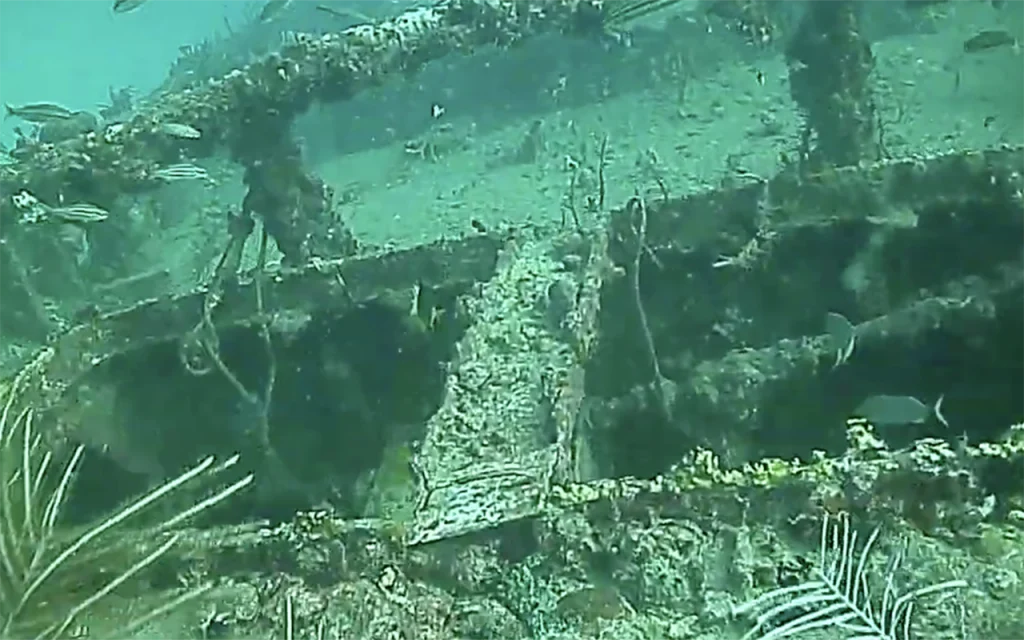
What is The Full History of This Tug Boat
Construction and Early Years
- Launch: The Jay Scutti was originally built in 1961 in the Netherlands by Jonker and Stans, specifically for the Aruba Ports Authority. It was designed to serve as a harbor tugboat in Oranjestad, Aruba, and was named Arikok, after the first settlers of Aruba.
- Ownership: The tugboat was later sold to the Meta Corporation, operating in the Netherlands Antilles and Aruba, where it continued its service as a harbor tug.
Legal Troubles and Confiscation
- Seizure: On November 18, 1984, the U.S. Coast Guard Cutter Cherokee seized the Arikok approximately 30 miles north of Grand Bahama Bank. The vessel was found carrying 15 tons of marijuana, leading to its confiscation due to its involvement in drug smuggling.
Transformation into an Artificial Reef
- Auction and Renaming: After its seizure, the Arikok was sold at public auction for $14,000 to Fort Lauderdale businessman Dale Scutti. He renamed the vessel Jay Scutti in memory of his son, who was an avid diver.
- Sinking: On September 19, 1986, the Jay Scutti was sunk as an artificial reef off the coast of Fort Lauderdale. An initial attempt to sink the vessel failed, but the Broward County Sheriff Department’s bomb squad successfully detonated 45 pounds of dynamite, sending the tugboat to the ocean floor.
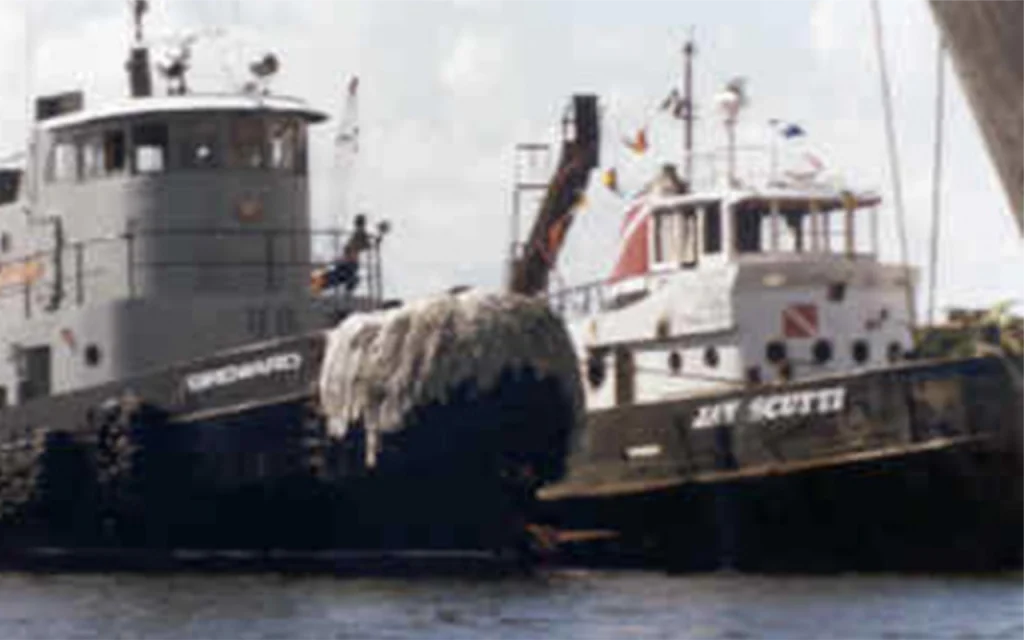
What Historical Features Can Still Be Identified on The Jay Scutti Wreck
- Overall Structure: The Jay Scutti is a 95-foot tugboat that sits upright on the ocean floor, with its bow pointing north. This orientation allows divers to easily navigate and explore the wreck’s structure.
- Wheelhouse: The wreck includes a prominent wheelhouse that rises to about 50 feet, providing opportunities for divers to swim through and explore the interior. This feature is significant as it showcases the operational aspect of the tugboat.
- Propeller and Stern: The massive propeller at the stern of the vessel is a striking feature that divers can observe. The stern area is also known for being a resting spot for nurse sharks, adding to the wreck’s ecological interest.
- Encrustation of Marine Life: The wreck is heavily encrusted with various marine organisms, including corals, sponges, hydroids, and tunicates. This growth not only enhances the visual appeal of the wreck but also reflects its role as an artificial reef, providing habitat for marine life.
- Historical Context: The ship’s history as the Arikok, a tugboat originally built in 1961 for the Aruba Ports Authority, adds a layer of historical significance. It was confiscated in 1984 after being involved in drug smuggling and later renamed Jay Scutti in memory of a local businessman’s son. This narrative can be appreciated by divers familiar with the wreck’s backstory.
- Part of a Wreck Cluster: The Jay Scutti is part of the Fort Lauderdale Wreck Trek, which includes other wrecks like the Pride, Tracey, and Merci Jesus. This clustering allows divers to explore multiple historical sites in one dive, enriching the overall diving experience.
What Safety Measures Are in Place for Divers Visiting The Jay Scutti
- Skill Level Requirements: The dive site is suitable for Open Water Divers or those with equivalent experience. This ensures that divers have the necessary training to handle the conditions at the wreck, which sits at a depth of 55 to 70 feet .
- Dive Planning: Divers are encouraged to plan their dives carefully, utilizing dive tables or dive computers to monitor time and depth. Proper planning helps mitigate risks associated with deeper diving, such as decompression sickness .
- Safety Stops: Divers are advised to ascend slowly and perform safety stops at 15 feet for about three minutes. This practice reduces the risk of decompression sickness by allowing nitrogen absorbed in the body to safely dissipate .
- Monitoring Air Supply: It is crucial for divers to monitor their air supply closely, especially at greater depths where air consumption may increase. Carrying a redundant air source, such as a pony bottle or utilizing a drop tank, is recommended to ensure that divers have access to additional air if needed .
- Buddy System: Divers are encouraged to dive in pairs or groups to enhance safety. Buddies can monitor each other for signs of nitrogen narcosis or other diving-related issues, providing assistance if needed .
- Dive Shop Support: Many dive shops in the area, such as Sea Experience and American Dream Dive Charters, offer guided dives to the Jay Scutti. These operators provide experienced dive guides who can assist with navigation and ensure safety protocols are followed .
- Environmental Considerations: Divers are reminded to use reef-safe sunscreen to protect the marine environment, as harmful chemicals in some sunscreens can damage coral reefs .
Dive Shops That Prove Diving Trips to This Wreck
- American Dream Dive Charters
- Location: Behind the Hilton on 17th Avenue, just south of downtown Fort Lauderdale.
- Description: Known for a clean and basic operation aboard their Newton Dive Boat. They provide guided dives to the Jay Scutti and other nearby wrecks.
- Sea Experience
- Location: Bahia Mar Marina on Fort Lauderdale Beach.
- Description: A full-service dive shop offering classes, charters, retail, and guided dives. They are recommended for new open water divers and can provide experienced dive guides.

